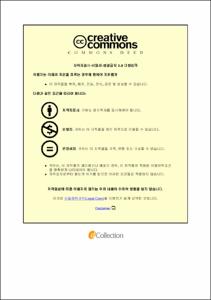Ulsan Univ. Repository
Thesis
General Graduate School
Mechanical & Automotive Engineering
2. Theses (Ph.D)
ATHERMAL EFFECT OF ELECTRIC CURRENT DURING ELECTRICACLLY ASSISTED RAPID ANNEALING & ELECTRICALLY ASSISTED PRESSURE JOINING
- Abstract
- First, annealing is one of the unavoidable key processes in many metal forming operations. In conventional annealing, the material is heated to the target temperature during a specific period in a furnace to produce refined grains, to induce softness, to relieve internal stresses, and to improve mechanical properties, depending on the following application. However, in general, conventional annealing using a furnace is time-consuming, requires large space for equipments, and consequently increases the manufacturing cost. To overcome the drawbacks of conventional annealing, electrically assisted (EA) annealing, in which the material is heated to the annealing temperature by an electric current during a relatively short period, has been suggested as a promising alternative annealing technique. In recent years, various studies have been conducted on electrically assisted manufacturing (EAM) utilizing a combination of thermal (resistance heating) and athermal effects of electric current. EA annealing, which is one of EAM methods, also uses the combination of thermal and athermal effects of electric current to enhance the efficiency of the process. The quantification of the thermal and athermal contributions of electric current in EAM can be challenging. A few studies have successfully described the electric current effect in terms of thermal effect only without considering the athermal effect. However, consideration of the athermal effect is generally necessary to thoroughly describe the mechanical or microstructural behaviors under an electric current. Therefore, to design a commercialization ready EA annealing process, the athermal contribution of electric current during the process needs to be properly assessed. Herein, the athermal contribution of electric current during EA rapid annealing (or simply, EAannealing) with a subsecond duration is evaluated by conducting comparative experiments of EA annealing and rapid induction heat treatment (IHT).
Second, metals are the most widely used materials for fabrication of products. Metal joining, as one of the key manufacturing technologies, is used extensively in production and plays predominant roles in manufacturing industry. Electrically assisted pressure joining (EAPJ) is one of the electrically assisted manufacturing (EAM) techniques. EAM is a new concept for manufacturing processes that utilize the electroplasticity of metals and their alloys to improve productivity, efficiency, and quality. EAPJ using resistance heating as a heat source is a solid state joining without melting or solidification. In this dissertation, the feasibility and effectiveness of EAPJ on single and multi-layers metal sheets are investigated.
In the present work in Chapter III, we investigate the feasibility of EAPJ of CrMnFeCoNi HEA to produce a sound solid-state joint at a temperature substantially lower than its melting point and the effect of an applied electric current pattern on the microstructural change in Joining Zones (JZs). And in chapter IV, we experimentally investigate the EAPJ of thin, cold-rolled Al-clad Al sheets developed for BEV battery casing applications. In EAPJ, an electric current and a compressive load with a constant displacement rate are simultaneously applied to the Al-clad Al sheets. Microstructure analysis and mechanical tests are performed on the EAPJed specimen to investigate the effectiveness of EAPJ.
- Issued Date
- 2022
- Awarded Date
- 2022-02
- Type
- dissertation
- Affiliation
- 울산대학교
- Department
- 일반대학원 기계자동차공학과
- Advisor
- 홍성태
- Degree
- Doctor
- Publisher
- 울산대학교 일반대학원 기계자동차공학과
- Language
- eng
- Rights
- 울산대학교 논문은 저작권에 의해 보호 받습니다.
- Appears in Collections:
- Mechanical & Automotive Engineering > 2. Theses (Ph.D)
- 파일 목록
-
-
Download
 200000606871.pdf
기타 데이터 / 12.69 MB / Adobe PDF
200000606871.pdf
기타 데이터 / 12.69 MB / Adobe PDF
-
Items in Repository are protected by copyright, with all rights reserved, unless otherwise indicated.